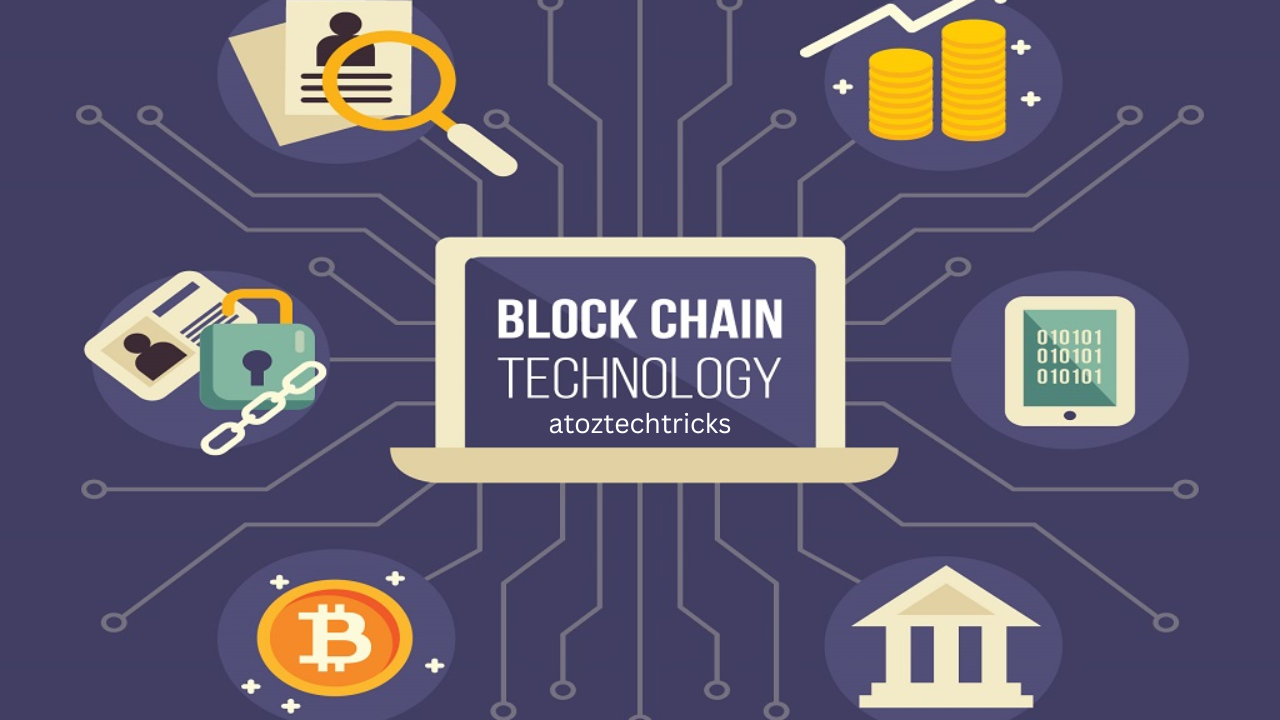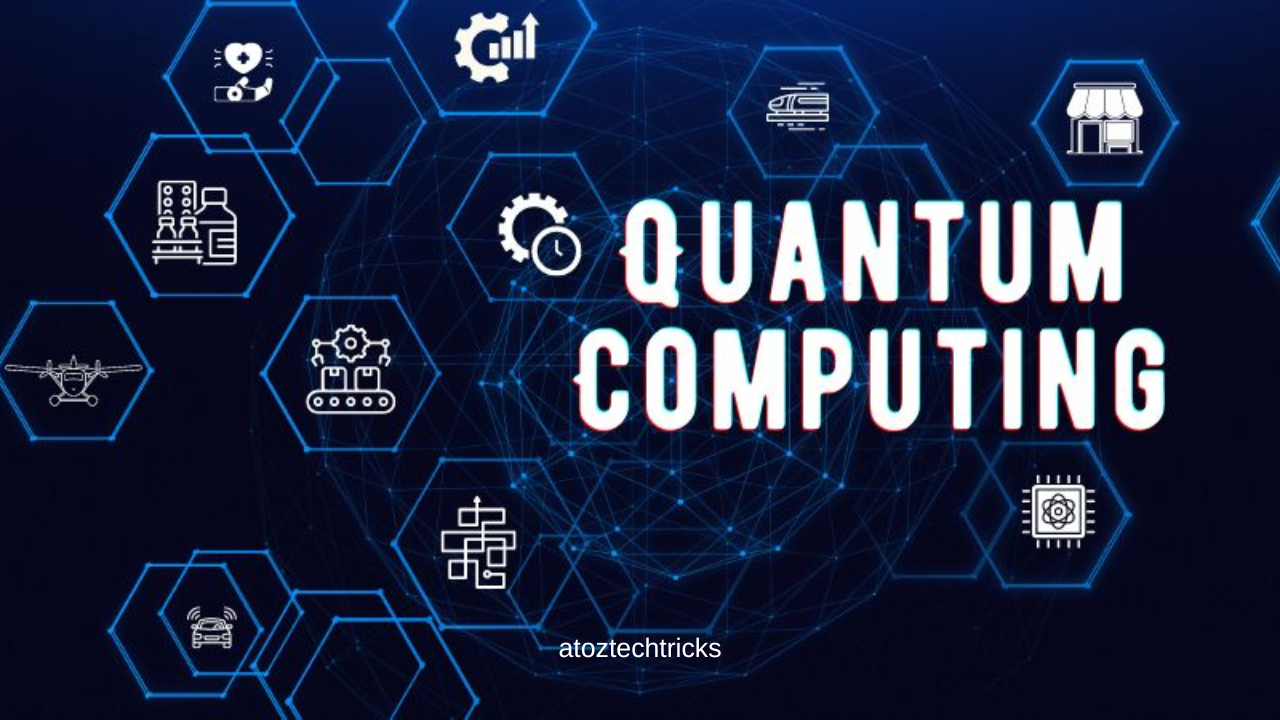Blockchain Technology: Revolutionizing Data Security and Decentralization
Blockchain technology, often associated with cryptocurrencies like Bitcoin, has evolved far beyond its initial use case. It is now recognized as a groundbreaking innovation with the potential to transform various industries by enhancing transparency, security, and efficiency. This article delves into the fundamentals of blockchain technology, its key features, applications across different sectors, and the challenges it faces.
Understanding Blockchain Technology
1. What is Blockchain Technology?
At its core, a blockchain is a decentralized digital ledger that records transactions across multiple computers in a way that ensures the information is secure, transparent, and immutable. This technology was first popularized by Bitcoin, but its potential extends far beyond digital currencies.
A blockchain consists of a chain of blocks, each containing a set of transactions. Each block is linked to the previous one through cryptographic hashes, creating a continuous and secure chain of data. Once data is added to the blockchain, it cannot be altered or deleted without altering all subsequent blocks, which requires consensus from the network.
2. Key Components of Blockchain
- Blocks: These are the fundamental units of the blockchain. Each block contains a list of transactions, a timestamp, and a cryptographic hash of the previous block.
- Chain: The chain is the continuous link of blocks, ensuring that all transactions are connected in a secure and chronological order.
- Nodes: Nodes are individual computers that participate in the blockchain network. They validate and propagate transactions and blocks throughout the network.
- Consensus Mechanisms: These are algorithms used to achieve agreement among nodes about the state of the blockchain. Common consensus mechanisms include Proof of Work (PoW), Proof of Stake (PoS), and Practical Byzantine Fault Tolerance (PBFT).
- Cryptography: Blockchain relies on cryptographic techniques to secure data and ensure the integrity of transactions. Hash functions and digital signatures are crucial components.

Key Features of Blockchain Technology
1. Decentralization
Unlike traditional databases, which are often centralized and controlled by a single entity, blockchain operates in a decentralized manner. This means that no single entity has control over the entire network. Instead, multiple participants (nodes) share control, making the system more resilient to failures and attacks.
2. Transparency
Blockchain technology promotes transparency by allowing all participants to access the same information. Transactions recorded on the blockchain are visible to all nodes, and the data is immutable once recorded. This transparency helps build trust among participants and reduces the need for intermediaries.
3. Immutability
Once data is added to the blockchain, it is nearly impossible to alter or delete. Each block contains a cryptographic hash of the previous block, creating a chain of data that is resistant to tampering. Any attempt to modify a block would require changing all subsequent blocks, which is computationally infeasible.
4. Security
Blockchain technology enhances security through encryption and consensus mechanisms. Transactions are encrypted, and cryptographic algorithms ensure that only authorized participants can access or modify the data. Consensus mechanisms prevent fraudulent transactions and maintain the integrity of the blockchain.
5. Efficiency
By eliminating intermediaries and automating processes through smart contracts, blockchain can improve efficiency and reduce costs. Smart contracts are self-executing contracts with the terms of the agreement directly written into code. They automatically execute and enforce contract terms when predefined conditions are met.
Applications of Blockchain Beyond Cryptocurrency: Transforming Industries and Driving Innovation
Applications of Blockchain Technology
1. Financial Services
Blockchain technology has had a significant impact on the financial services industry. It enables faster and more secure transactions, reduces the need for intermediaries, and lowers transaction costs. Key applications include:
- Cryptocurrencies: Bitcoin, Ethereum, and other digital currencies are built on blockchain technology. They offer decentralized and secure alternatives to traditional currencies and payment systems.
- Cross-Border Payments: Blockchain can streamline cross-border payments by reducing the time and cost associated with traditional banking systems. Transactions can be completed in minutes rather than days.
- Smart Contracts: Smart contracts automate and enforce contract terms without the need for intermediaries. They are used in various financial applications, including derivatives, insurance, and lending.
2. Supply Chain Management
Blockchain technology enhances supply chain management by providing transparency and traceability throughout the supply chain. Key benefits include:
- Provenance Tracking: Blockchain can track the origin and movement of goods from production to delivery. This ensures that products are authentic and meet quality standards.
- Fraud Prevention: By recording every transaction on an immutable ledger, blockchain helps prevent fraud and counterfeiting. This is particularly important for industries such as pharmaceuticals and luxury goods.
- Efficiency: Blockchain can automate supply chain processes through smart contracts, reducing paperwork and administrative costs. It also improves communication and collaboration among supply chain participants.
3. Healthcare
In the healthcare industry, blockchain technology can improve data security, patient privacy, and interoperability. Key applications include:
- Electronic Health Records (EHRs): Blockchain can securely store and share patient records, ensuring that only authorized individuals have access. This improves data accuracy and reduces the risk of data breaches.
- Drug Traceability: Blockchain can track the production and distribution of pharmaceuticals, ensuring that drugs are genuine and have not been tampered with. This helps combat counterfeit drugs and enhances patient safety.
- Clinical Trials: Blockchain can enhance the transparency and integrity of clinical trials by recording data in an immutable ledger. This ensures that trial results are accurate and reduces the risk of data manipulation.
4. Real Estate
Blockchain technology has the potential to transform the real estate industry by simplifying transactions and reducing fraud. Key applications include:
- Property Transfers: Blockchain can streamline property transfers by automating the process through smart contracts. This reduces the need for intermediaries and speeds up the transaction process.
- Land Registry: Blockchain can create a secure and transparent land registry, reducing the risk of fraud and ensuring that property ownership records are accurate and up-to-date.
- Fractional Ownership: Blockchain enables fractional ownership of real estate assets, allowing multiple investors to own a share of a property. This lowers the barrier to entry for real estate investment and increases liquidity in the market.
5. Voting Systems
Blockchain technology can enhance the security and transparency of voting systems. Key benefits include:
- Tamper-Resistance: Blockchain provides an immutable record of votes, making it difficult for malicious actors to alter or tamper with the results.
- Transparency: Blockchain allows for transparent and verifiable voting processes. Voters can verify that their votes have been recorded and counted accurately.
- Accessibility: Blockchain-based voting systems can increase accessibility by allowing remote and secure voting. This can improve participation rates and make the voting process more inclusive.
The Potential for Blockchain in Improving Supply Chain Management
Challenges and Limitations of Blockchain Technology
1. Scalability
One of the major challenges facing blockchain technology is scalability. As the number of transactions increases, the blockchain can become congested, leading to slower transaction times and higher costs. Solutions such as layer 2 scaling solutions and sharding are being developed to address these issues, but scalability remains a significant challenge.
2. Energy Consumption
Some consensus mechanisms, particularly Proof of Work (PoW), are energy-intensive and require significant computational power. This has led to concerns about the environmental impact of blockchain technology. Efforts are being made to develop more energy-efficient consensus mechanisms, such as Proof of Stake (PoS) and Proof of Authority (PoA).
3. Regulation and Legal Issues
The regulatory landscape for blockchain technology is still evolving. Governments and regulatory bodies are grappling with how to address issues related to data privacy, financial transactions, and digital currencies. The lack of clear regulations can create uncertainty and hinder the adoption of blockchain technology.
4. Security and Privacy
While blockchain technology enhances security through cryptographic techniques, it is not immune to attacks. Vulnerabilities such as smart contract bugs, 51% attacks, and social engineering can compromise the security of blockchain systems. Ensuring robust security measures and privacy protections is crucial for the widespread adoption of blockchain technology.
5. Adoption and Integration
The adoption of blockchain technology requires significant changes to existing systems and processes. Organizations must invest in new infrastructure, train employees, and address interoperability issues. The transition to blockchain-based systems can be complex and costly, particularly for established industries.

The Future of Blockchain Technology
Despite the challenges, the future of blockchain technology holds great promise. Innovations and advancements are continuously being made to address existing limitations and expand the use cases of blockchain. Key trends and developments include:
1. Integration with Other Technologies
Blockchain technology is increasingly being integrated with other emerging technologies, such as artificial intelligence (AI), the Internet of Things (IoT), and edge computing. This integration can enhance the capabilities of blockchain and create new opportunities for innovation.
2. Development of Private and Consortium Blockchains
Private and consortium blockchains are gaining traction as organizations seek to leverage blockchain technology within controlled environments. These blockchains offer greater privacy and control while maintaining some of the benefits of decentralization.
3. Evolution of Consensus Mechanisms
New consensus mechanisms, such as Proof of Stake (PoS) and Delegated Proof of Stake (DPoS), are being developed to address scalability and energy consumption issues. These mechanisms aim to provide more efficient and sustainable solutions for validating transactions.
4. Regulatory Clarity and Standardization
As blockchain technology matures, regulatory clarity and standardization are expected to improve. Clear regulations and industry standards will help facilitate the adoption of blockchain and address legal and compliance issues.
5. Enhanced User Experience
Efforts are being made to improve the user experience of blockchain-based applications. This includes developing user-friendly interfaces, simplifying transaction processes, and increasing accessibility for non-technical users.
Blockchain technology is a revolutionary innovation with the potential to transform various industries by enhancing transparency, security, and efficiency. Its decentralized nature, immutability, and cryptographic security features make it a powerful tool for addressing challenges in finance, supply chain management, healthcare, real estate, and voting systems.
However, blockchain technology also faces challenges, including scalability, energy consumption, regulatory uncertainty, and security concerns. Addressing these challenges will be crucial for the widespread adoption and successful implementation of blockchain technology.

The future of blockchain technology holds great promise, with ongoing advancements and integration with other emerging technologies. As technology continues to evolve, it is likely to unlock new opportunities and reshape industries in ways that were once thought to be impossible.
Government Regulations and Policies Surrounding Blockchain: A Comprehensive Overview




Post Comment